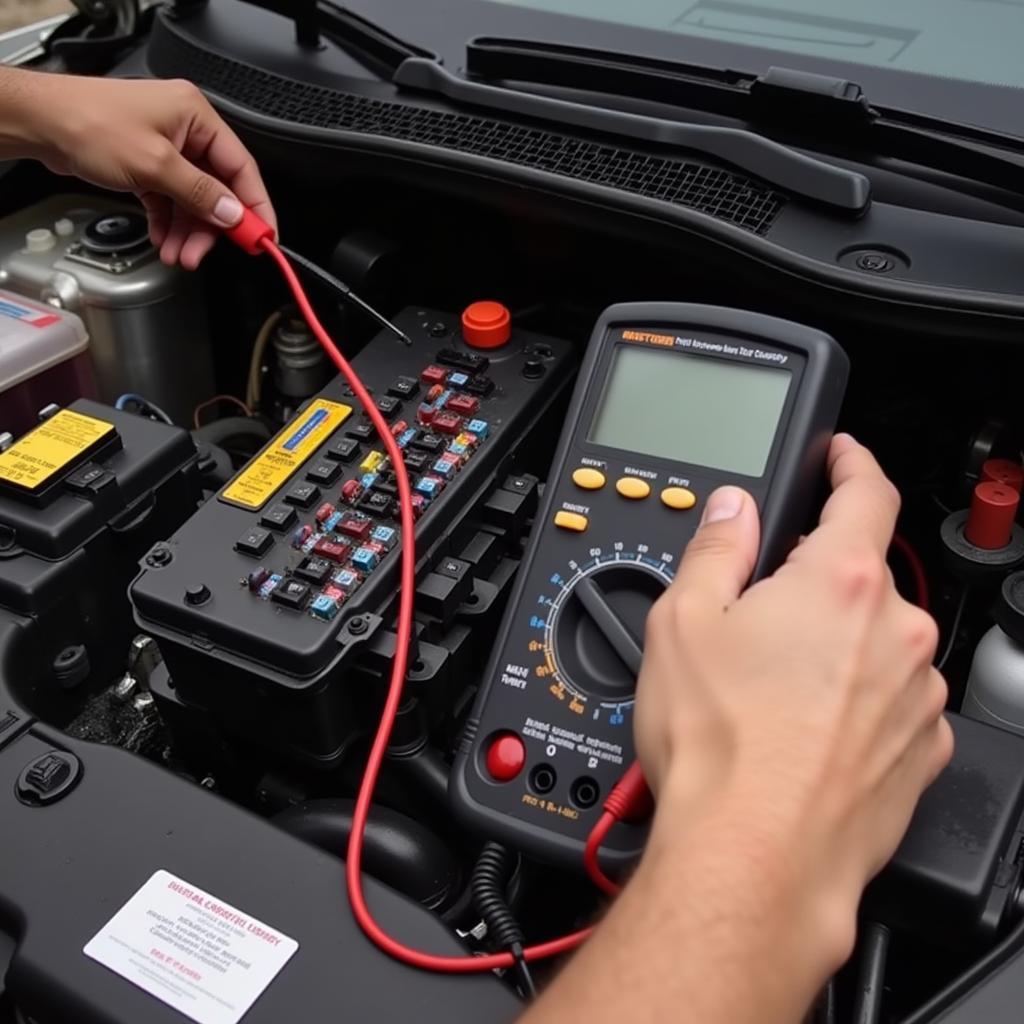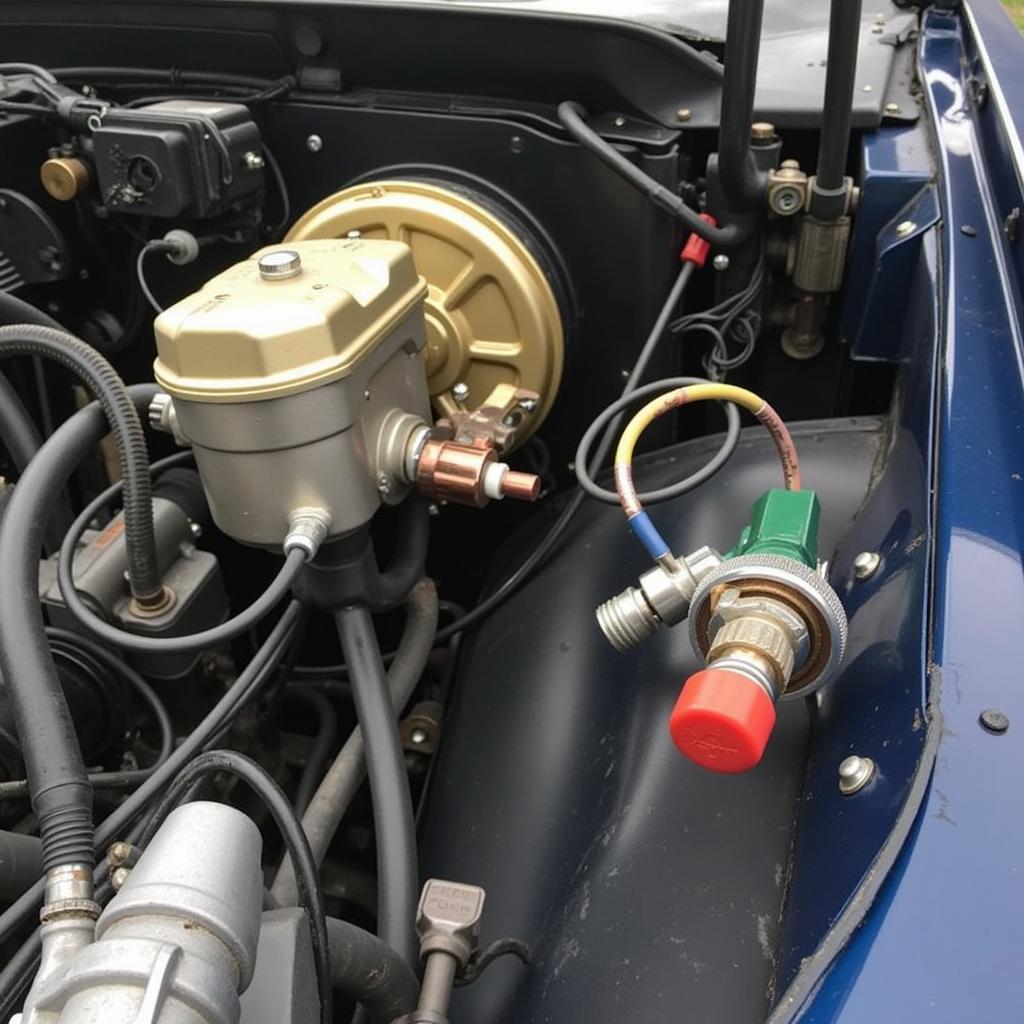A parasitic drain test on battery is crucial for maintaining your car’s electrical system. It identifies hidden power drains that can leave you stranded with a dead battery. This guide will walk you through how to perform this test and what to do with the results. parasitic battery drain test
Understanding Parasitic Battery Drain
A parasitic draw, also known as a parasitic drain, occurs when a component in your vehicle continues to draw power even after the ignition is off. While some systems, like the clock and security system, require a small amount of power, excessive drain can deplete your battery overnight or within a few days. Identifying the source of this drain is key to preventing future battery problems.
What Causes a Parasitic Drain?
Several factors can contribute to a parasitic drain. Faulty relays, glove box lights staying on, or aftermarket accessories improperly wired are common culprits. Sometimes, a malfunctioning alternator can also contribute to a drained battery, although this isn’t strictly a parasitic drain.
How to Perform a Parasitic Drain Test on Battery
Performing a parasitic drain test is a straightforward process that can be done with a multimeter. However, be sure to follow these steps carefully to ensure accurate readings and prevent damage to your vehicle’s electrical system.
- Gather your tools: You’ll need a digital multimeter with a milliamp setting and alligator clips.
- Prepare your vehicle: Turn off the ignition, all lights, and accessories. Close all doors and ensure the dome light is off. Let the car sit for about 30 minutes to allow modules to go to sleep.
- Disconnect the negative battery cable: Loosen the nut on the negative battery terminal and carefully remove the cable. Be cautious not to touch the positive terminal with any metal tools.
- Connect the multimeter: Set your multimeter to the DC milliamp setting (typically marked “mA”). Connect the red lead of the multimeter to the negative battery cable and the black lead to the negative battery post.
 Multimeter Connection for Parasitic Drain Test
Multimeter Connection for Parasitic Drain Test
- Observe the reading: A healthy parasitic drain should be less than 50 milliamps. A higher reading indicates an excessive drain.
Interpreting the Multimeter Readings
If the reading is significantly higher than 50mA, you have a parasitic drain. The next step is to isolate the culprit.
Locating the Source of the Drain
Now, the detective work begins. Start by pulling fuses one at a time, observing the multimeter reading after each one. When the reading drops significantly, you’ve identified the circuit with the problem. test parasitic battery drain multimeter
Common Culprits of Parasitic Drain
- Interior lights: Check the glove box, trunk, and under-hood lights.
- Faulty relays: Relays that are stuck in the “on” position can draw significant power.
- Aftermarket accessories: Poorly installed car stereos, alarms, or other accessories can be a source of drain.
- Door switches: A faulty door switch can trick the car into thinking a door is open, keeping interior lights or other systems active.
 Locating Parasitic Drain with Fuse Box
Locating Parasitic Drain with Fuse Box
“A common mistake people make is not waiting for the vehicle’s modules to go to sleep before taking a reading,” says automotive electrical expert, John Miller. “This can lead to inaccurate results and unnecessary troubleshooting.”
Preventing Future Parasitic Drains
Proper installation of aftermarket accessories and regular checks of your vehicle’s electrical system can go a long way in preventing parasitic drains. battery drain parasitic draw testing
Conclusion
Performing a parasitic drain test on battery is an essential skill for any car owner. By understanding how to conduct this test, you can identify and address the root cause of a drained battery, saving yourself time, money, and the frustration of being stranded. Don’t let a parasitic drain leave you in the dark! Remember to always consult a qualified mechanic if you’re unsure about any step of the process. led lights drain car battery
FAQ
- How often should I perform a parasitic drain test? It’s a good idea to test annually or if you notice your battery draining faster than usual.
- Can a bad alternator cause a parasitic drain? A bad alternator won’t directly cause a parasitic drain, but it can prevent the battery from charging properly, leading to similar symptoms. diagnose bad alternator or battery
- What is a normal parasitic draw reading? A healthy reading should be below 50 milliamps.
- My car battery keeps dying, but the parasitic drain test is normal. What else could be the problem? The battery itself may be old and need replacing.
- Is it safe to disconnect the battery while the car is running? No, never disconnect the battery while the engine is running. This can damage the vehicle’s electrical system.
- Can a parasitic drain damage the car’s computer? While rare, a prolonged and severe parasitic drain can potentially damage electronic components.
- What should I do if I can’t find the source of the drain? Consult a qualified automotive electrician for further diagnosis.

